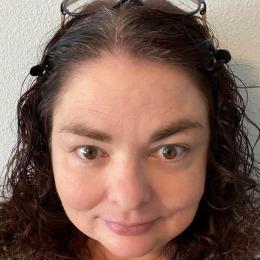Cheat Sheet
Virtuous cycle. In-house counsel are well positioned to identify engineers to participate in the patent process.
Invention harvesting. In-house counsel can spur friendly competition between groups in order to foster innovation.
Recognition is key. Formal recognition on a quarterly or annual basis is a powerful motivator.
Value across the organization. Understanding the needs and motivations of different stakeholders will help bring value throughout the company.
Traditionally, the job of in-house intellectual property and product counsel is to protect innovation, rather than to actively encourage it. However, with the right mindset, counsel can also play a critical role in promoting innovation and in particular encouraging and supporting inventor diversity and engagement across the organization.
A recent proposal by the Subcommittee on Intellectual Property on the Inventor Diversity for Economic Advancement Act of 2021 has shone a light on a historic lack of diversity among patent inventors, and of official data showing inventor diversity. In-house patent counsel are well positioned to help improve the diversity of inventors, and to provide proactive outreach and engagement with early-career, women, veteran, and underrepresented groups as part of the patenting process. This article provides some useful guidelines on patent harvesting in an inclusive manner from a broad population of inventors.
Why in-house counsel can and should lead innovation
Innovation is rarely an accident. It is a discipline cultured through exercise, repetition, continual improvement, and learning. With time and effort, it can become second nature to inventors and a skill inclusively instilled across the entire R&D team. While the term “engineer” is used in this article, it applies equally to software developers, scientists, technicians, technologists, and anyone in the creative technical arts.
In-house counsel are the primary legal point of contact for many engineers and technical contributors within a corporation or research organization. In-house counsel can actively identify engineers from a broad range of backgrounds who have worked on projects and invite them into the patent process, and encourage their contributions and ideas. In particular, counsel can actively seek contributions from female, veteran, under-represented groups, and early-career engineers and help them along the path to being an inventor on a patent.
Fostering belonging among new hires
When new technical hires join or employees are brought on board through acquisitions, it is worthwhile for in-house counsel to invest time in educating the new team members regarding the company's innovation policies and philosophy of inclusive invention. In-house counsel can help address this by thoughtfully highlighting inventors at the company who are early career, female, veteran, and/or from diverse groups, and working with the business unit leaders to spotlight their inventions and achievements.
Many in-house counsel may have observed — as have the authors personally — that a virtuous cycle begins when new inventors get a first taste of successful innovation through filing a patent application and seeing the peer recognition and career opportunities that result.
Experienced staff
Even in an established organization, it is helpful to refresh innovation practices periodically with existing staff within the inventor community. In-house counsel can effectively use training sessions to teach experienced engineers or product architects how to rethink what they might consider as innovations, as well as encouraging them to proactively seek contributions from all groups of engineers.
Collaboration
In-house counsel can encourage innovation by taking the time to develop good professional and technical relationships broadly across the inventor communities. In-house counsel can and should engage with a diverse range of rank-and-file engineers doing the substantive product development work, not just the “champion inventors” who already know how to innovate and submit their inventions. Counsel should keep track of upcoming product releases, hackathons, and other innovation generating sessions and regularly contact responsible owners of those projects to have collaborative conversations.
If the company has a technical sales or architect team, counsel should have regular conversations with those stakeholders to ensure that new innovations are captured. Counsel should identify subject matter experts and innovation promoters within the broader technical community and cultivate trusted relationships and rapport with them through dialogue, engagement and spotlighting, their creativity.
Cross-pollination
Large organizations often operate in a silo environment, which can limit innovation to within the bounds of the silo. By exploring a technical problem from multiple perspectives, new aspects and potential solutions are uncovered, with related opportunities for innovation.
Accelerating invention harvesting
Invention harvesting is a formal process whereby counsel (usually in-house counsel but occasionally outside counsel) engage in discussion about innovation ideas with a technical team and record those ideas for potential patent filing. In-house counsel can accelerate this process and increase productivity by challenging the engineers with a difficult problem related to their business or product and prompting them to suggest solutions (engineers love to demonstrate how smart they are, almost as much as attorneys love to demonstrate how right they are).
Effective questions can include the following:
- What additional perspectives and viewpoints should we include in this discussion?
- Are all collaborators and contributors inclusively represented here?
- What’s the hardest problem you had to solve in the past quarter?
- This may be the perfect solution, but what’s the next cheapest/easiest solution?
- If your budget were halved, how would you solve this problem? Would you need an entirely different approach?
- In five years, will people still be doing it this way? Will this solution even matter?
Other techniques for accelerating invention harvesting and generating invention disclosures include setting specific goals for innovation with your internal business unit clients, which are propagated into employee annual goals. In-house counsel can spur healthy friendly competition between groups in order to foster innovation. People as individuals and teams as a whole can be motivated to peak performance with some healthy competition and friendly challenges. It is worthwhile identifying even small improvements, as in the aggregate they can add up to an IP portfolio of substantial utility.
Recognition is key to motivation
It is important to recognize and celebrate the achievements of your inventor community. This may be done on a quarterly basis (e.g., quarterly business overview) and also in a more formal annual manner (e.g., an annual inventor award event, live or virtual). Engineers value recognition among peers and a reputation for technical expertise, sometimes even more than financial rewards. Visual badges of creativity and providing creative gifts or “swag” to inventors who file patent applications may also be a motivational way to reward inventors.
To ensure that the gifts appeal to every demographic, they should encompass a broad range of items to select from, not just the typical technology or “geek” gifts. You may want to include experiences and the option for charitable donations, which may appeal more to early-career inventors. Some inventors may prefer family-oriented gifts if they are parents of young children and may appreciate such thoughtfulness from the legal team. Items like these have diverse appeal across gender, culture, family-status, and socioeconomic lines.
It is valuable to announce inventor successes to both the engineering community and also (more importantly) to management and executive ranks. One idea is to have a monthly newsletter that is distributed internally within the company where inventors are highlighted and acknowledged, with particular thought given to spotlighting the achievements of diverse and under-represented groups, so others may recognize their achievements and draw inspiration from them.
Culture counts too
One of the easiest and least expensive ways that in-house counsel can encourage participation by engineers is by being easy to work with. Counsel can promote a culture of engagement by reducing bureaucracy and bringing the engineers as close as possible to the innovation and patenting process. The easier and more time-efficient the disclosure process is, the more likely engineers are to use it.
Further, it is helpful to be sensitive and courteous to stakeholders when analyzing and delivering results of invention reviews. This is often demonstrated by being diplomatic (but fair and honest) when conveying disappointing news such as non-filing of a patent.
Walking the walk and talking the talk
In-house counsel often have a technical background of some kind and it helps to speak to this when building a relationship with the inventor community. When engineers see that counsel can speak their “technical language” and in particular relate to them and contribute value in technical discussions, their respect for them and willingness to engage usually increase. It is also beneficial for counsel to understand what is happening in the market, along with what competitors are doing, by engaging with the company’s internal competitive intelligence team.
Generating value across the organization
In-house counsel must be able to explain clearly to each group of stakeholders how they benefit from participating in and supporting the innovation and patenting process. Each stakeholder groups has different needs and motivations.
Value to engineers
Counsel play a critical role in helping engineers to identify, clearly express, and protect their valuable technical contributions. They can inspire engineers to “look beyond their cubicles” and abstract point solutions and potentially expand the market applicability of their inventions. Further, counsel can bypass organizational silos and introduce technologists with relevant expertise, ideas or valuable knowledge to contribute – thus facilitating innovation that may normally not have otherwise taken place, and encouraging possible mentorship opportunities.
Value to management
Each layer of management has a specific set of concerns that in-house counsel can help to address.
Executive management is primarily concerned with protecting existing revenue and profitability, and growing future revenue by expanding markets, geographies, and product offerings. Executive management is often concerned with having a strong IP defensive posture in the event of actual or threatened litigation or product copying.
Mid-level management is usually concerned with the success of specific projects and teams and demonstrating that their efforts provide value to the company. Evidence of successful invention harvests and patent filings are a useful metric to indicate the level of innovation in the group.
Counsel can help to address these management concerns by developing strong patents to protect revenue generated by relevant products. Building select portfolios of key patents across relevant markets and jurisdictions can be a strong disincentive to competitors attempting to copy your products. Strong patents can provide valuable leverage in a cross-licensing discussion, where it is not just about the number of arrows in the quiver, but rather how sharp they are and whether they will shoot straight. Patent quality counts and in-house counsel are primarily responsible for ensuring this.
Where there is an ongoing competitive threat, it is valuable to analyze the issued patents in the portfolio and understand whether any competitors have products or services which read upon the claimed inventions in those issued patents. Performing this exercise will not only give you a very relevant understanding of your portfolio, but also gives you an advantage to quickly respond (with your patents, or other relevant assets) in case a competitor threatens to assert any of their patents against your company.
Value to the organization
Engineers, management, and counsel often change companies or organizations every few years (and more frequently in hot markets). In contrast, a patent portfolio lasts 20 years or longer with term extensions. A well-tended innovation culture will reap rewards for the organization and build the reputation of the inventor(s). In-house counsel can encourage engineers to build a legacy of invention at the organization that will last for many years, even when they move on in their career.
Driving change
Outside counsel are, in a sense, an extension of the in-house counsel. To that end, your outside counsel should include diverse team members who reflect your broader engineering community. In-house counsel should encourage diversity in those that are meeting with their inventors, and sensitivity to the needs of diverse inventors. Women, under-represented groups, and early-career patent counsel should be a key part of the harvest team.
At a macro level, the more that outside counsels see the push for diversity from their clients, the more deliberate they will be in their hiring practices and they will seek out and hire a more representative workforce. This will, in time, encourage more women, veterans, and under-represented groups to pursue IP law since they will see opportunities in the field. This is a win-win for everyone.
Diversity of inventorship benefits the company, the inventors, and the overall legal and technical communities. In-house counsel play a pivotal role in driving this important effort, and helping improve results.
Author credit also belongs to: Ron Karr, Judy Shie, and Michele Ardizzone.







